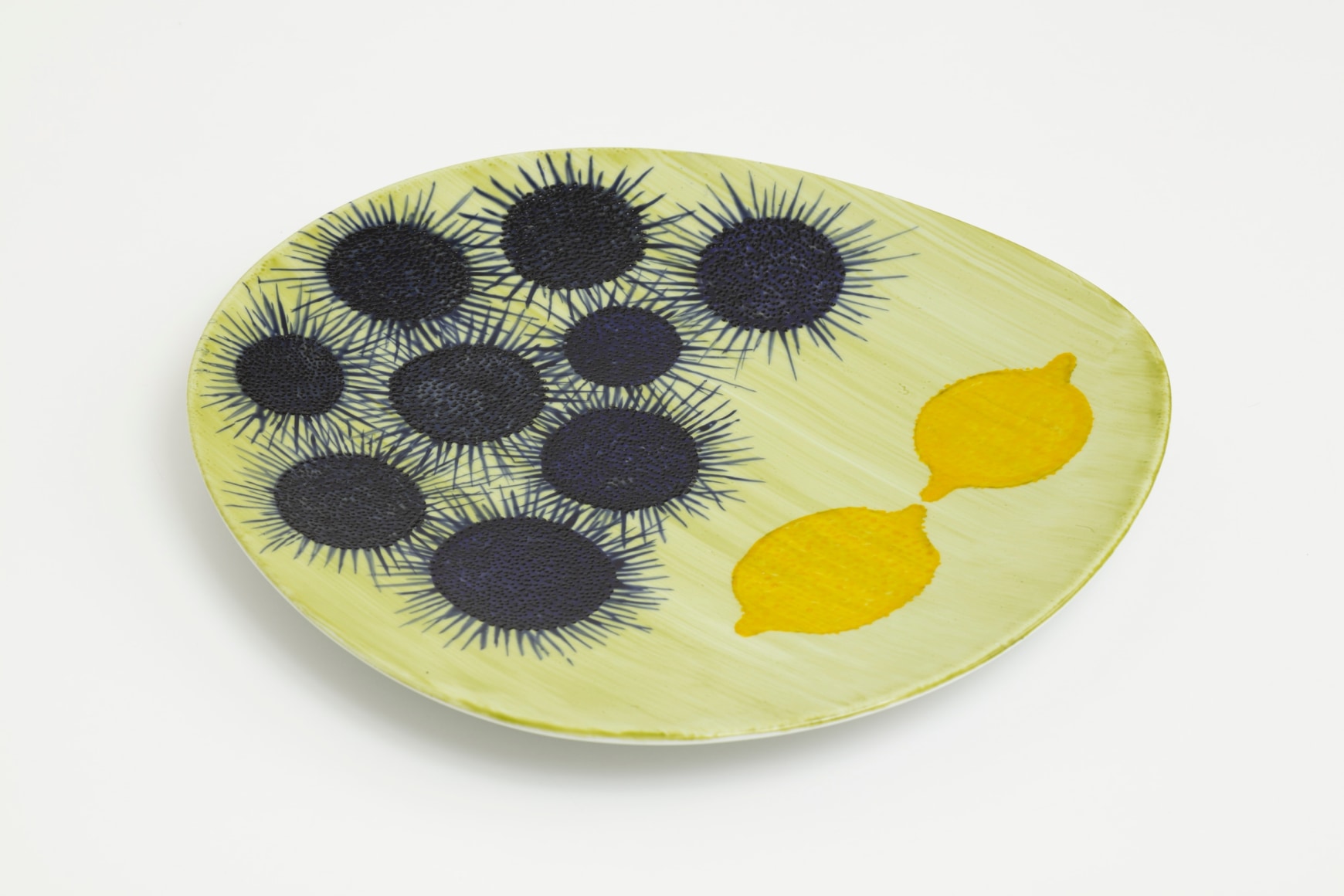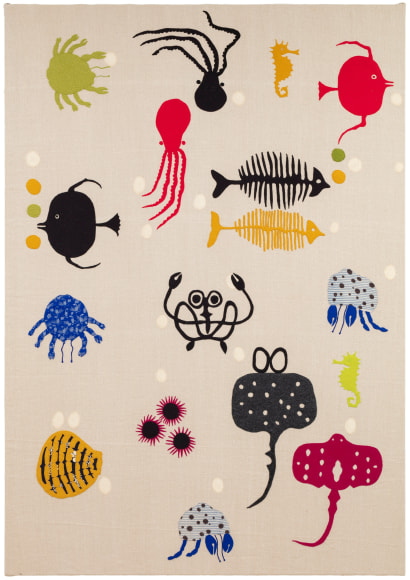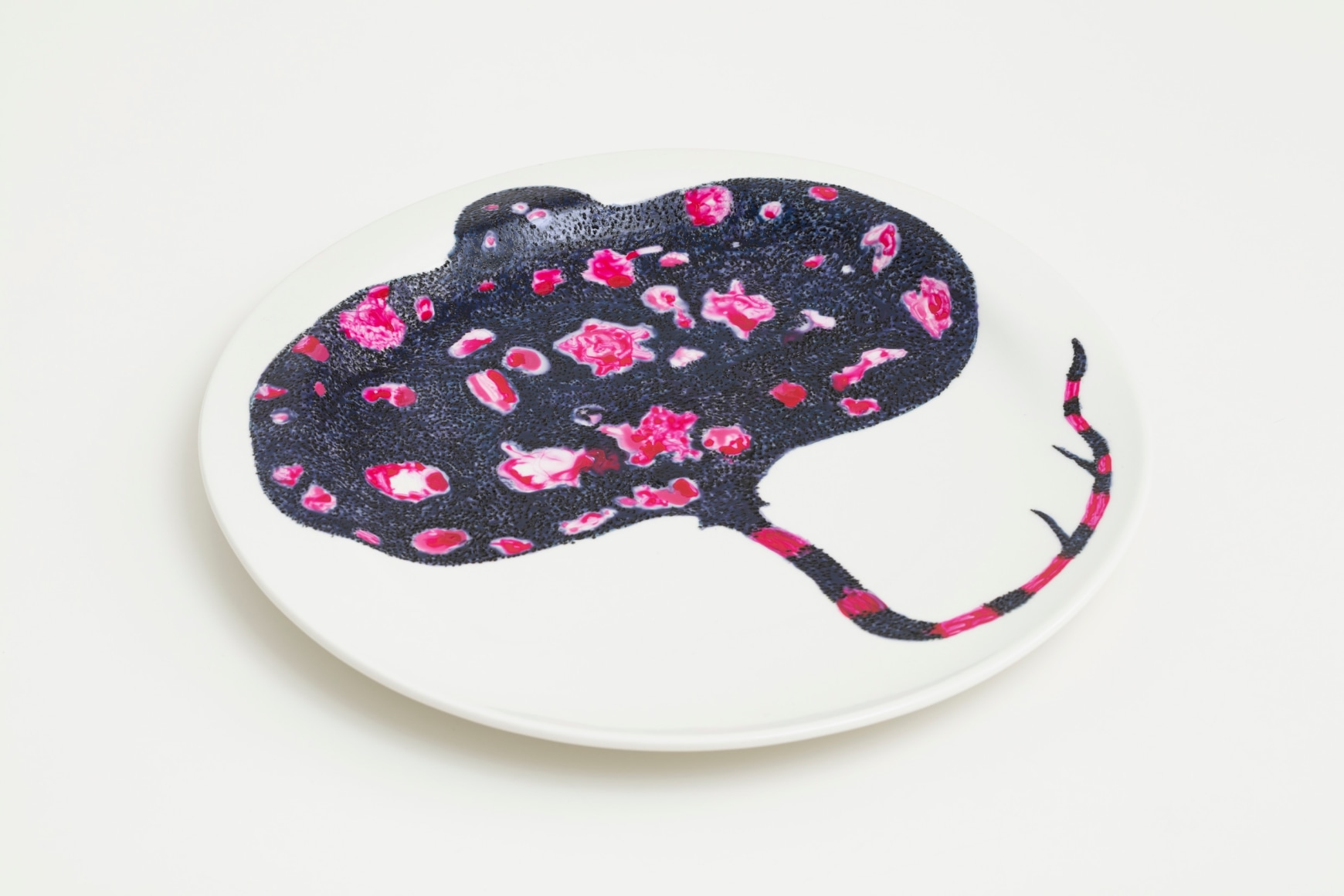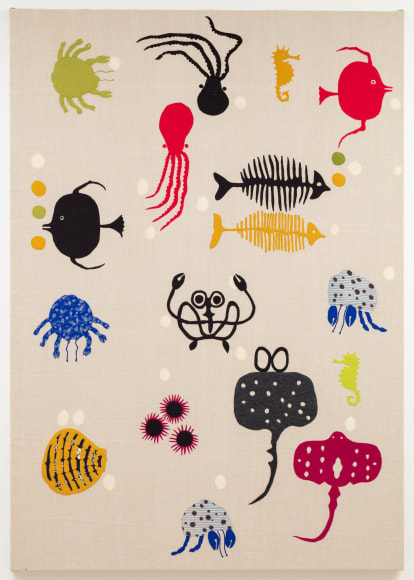Hannu Väisänen: Entourage of the Seahorse
Galerie Forsblom 8.4.– 30.4.2022
For an artist accustomed to composing works on stretched canvas, the transition to painting on porcelain plates is a bewildering and wonderfully inspirational experience. A plate or bowl – being round, oval, off-center, and nearly always concave – is a completely different surface upon which to paint. A plate has no top or bottom, no left or right side. It is never upside-down or back-to-front. A plate has no direction. And it must be continually spun around while painting, at least in my case.
China painting is conventionally regarded as the whimsical pastime of elderly widows. But porcelain painting is just as capable of generating dynamic tension and delivering surprises and social commentary as traditional techniques. I for one have taken up china painting to prove – at least to myself – that the long-entrenched barrier between applied art and proper art is an obsolete misconception.
My visual motifs are inspired by the exquisite, vulnerable, ever-endangered sea. Back in the days when travel was still part of our lives, I would often go scuba diving in the Red Sea to admire the resplendent coral reefs. There I understood how artists pale by comparison to coral: our understanding of color and form is nothing alongside the riotous palette and exuberant profusion of shapes found in the marine world. No artist can ever faithfully capture nature’s brilliant artistry. The underwater world transcends the human imagination; it is an eternal challenge to replicate, and rightly so. If you spy a colorful starfish and you try to take it home as a souvenir, you will find that its colors instantly fade the moment you bring it up to the surface. Its vibrancy is suddenly extinguished. The starfish belongs on its reef, not in the hand of a human being. May artists be satisfied to capture the wonders of nature by painting delicate seahorses, pufferfish, bell-shaped jellyfish, and hermit crabs pincers on porcelain.
Hannu Väisänen
Visual artist, writer, set designer, costume designer, director, and illustrator Hannu Väisänen is an award-winning, multitalented artist who works effortlessly across different mediums. His work is found in numerous major Finnish collections, and he has completed commissions for clients including the Finnish National Opera, Kontula Church, and Oulu Cathedral. His notable accolades include the State Art Prize and the 2007 Finlandia Prize for Literature.








